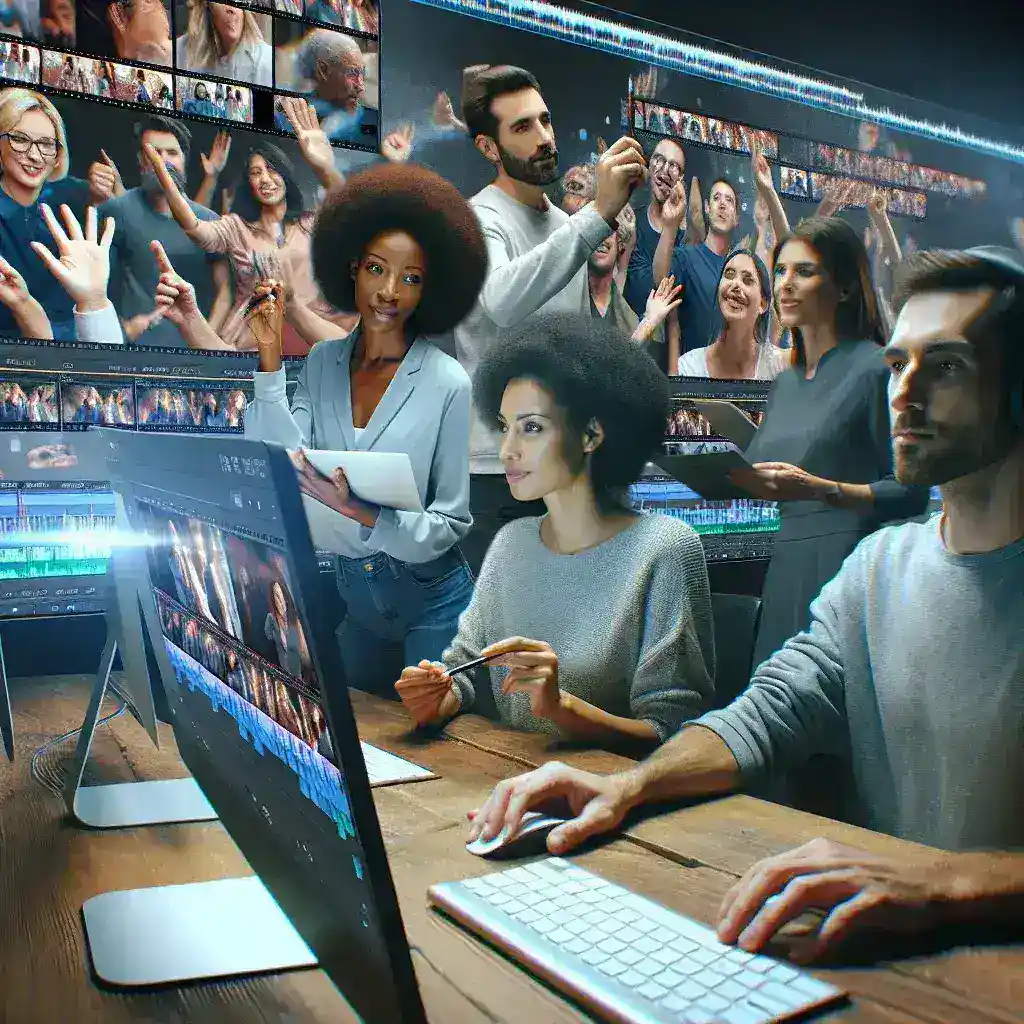Understanding the Foundation of Client Collaboration
Video editing collaboration has evolved dramatically in the digital age, transforming from simple approval processes to sophisticated partnerships that drive creative excellence. Successful client collaboration in video editing requires a delicate balance of technical expertise, clear communication, and strategic project management. Modern video editors must navigate complex client relationships while delivering high-quality content that meets both creative vision and business objectives.
The landscape of video production has shifted significantly, with clients becoming more involved in the creative process than ever before. This increased participation demands editors to develop enhanced collaborative skills that extend far beyond technical proficiency. Understanding client psychology, managing expectations, and creating seamless feedback loops have become essential components of professional video editing services.
Establishing Clear Communication Channels
Effective communication serves as the cornerstone of successful video editing collaborations. Establishing multiple communication channels ensures that both parties remain aligned throughout the project lifecycle. Email remains the primary formal communication method for documentation purposes, while instant messaging platforms facilitate quick clarifications and updates.
Video conferencing has revolutionized client interactions, allowing real-time discussions about creative decisions and immediate feedback on rough cuts. Screen sharing capabilities enable editors to walk clients through specific editing choices, explaining technical decisions and gathering instant reactions. This visual communication approach significantly reduces misunderstandings and accelerates the approval process.
Setting communication expectations from the project’s inception prevents confusion and establishes professional boundaries. Clients should understand response timeframes, preferred communication methods, and escalation procedures for urgent matters. Creating a communication charter that outlines these parameters demonstrates professionalism and sets the stage for smooth collaboration.
Implementing Structured Feedback Systems
Feedback management represents one of the most challenging aspects of client collaboration. Implementing structured feedback systems streamlines the revision process and prevents the common pitfall of endless modification cycles. Time-coded feedback sheets allow clients to provide specific comments linked to exact moments in the video timeline, eliminating ambiguity about requested changes.
Digital collaboration platforms have transformed feedback collection, offering features like frame-accurate commenting, version tracking, and approval workflows. These tools create an organized environment where feedback is systematically collected, categorized, and addressed. Clients can mark specific frames, add detailed comments, and track the status of their requested modifications.
Pre-Production Planning and Client Onboarding
The collaboration process begins long before the first edit is made. Comprehensive pre-production planning involves detailed discussions about creative vision, technical requirements, and project timelines. During this phase, editors should gather extensive information about client preferences, brand guidelines, and target audience characteristics.
Client onboarding sessions establish the foundation for successful collaboration. These meetings should cover project scope, deliverable formats, revision policies, and quality standards. Providing clients with sample workflows, explaining the editing process, and setting realistic timeline expectations prevents future conflicts and ensures smooth project execution.
Creating detailed project briefs that capture all client requirements serves as a reference document throughout the editing process. These briefs should include creative objectives, technical specifications, brand guidelines, and any specific client preferences or restrictions. Having this information documented prevents scope creep and provides clarity when questions arise during editing.
Setting Realistic Expectations and Timelines
Timeline management significantly impacts client satisfaction and project success. Setting realistic expectations requires editors to accurately assess project complexity, account for revision cycles, and communicate potential challenges proactively. Clients often underestimate the time required for quality video editing, making education about the process essential.
Breaking projects into clearly defined phases with specific deliverables helps clients understand the editing progression. Providing milestone dates for rough cuts, review periods, and final delivery creates transparency and allows clients to plan their internal processes accordingly. Buffer time should be built into schedules to accommodate unexpected revisions or technical challenges.
Utilizing Collaborative Technology and Tools
Modern video editing collaboration relies heavily on specialized software and platforms designed to facilitate remote teamwork. Cloud-based editing platforms enable real-time collaboration, allowing multiple stakeholders to access projects simultaneously. These tools provide version control, automated backups, and seamless file sharing capabilities that streamline the collaborative process.
Project management software integrates with editing workflows to provide comprehensive oversight of deadlines, deliverables, and communication threads. These platforms offer task assignment, progress tracking, and automated notifications that keep all parties informed about project status. Integration with popular editing software creates seamless workflows that minimize administrative overhead.
File sharing and storage solutions must accommodate large video files while maintaining security and accessibility. Professional-grade platforms offer features like watermarked previews, download restrictions, and detailed access logs that protect intellectual property while facilitating collaboration. These tools ensure that clients can review content securely without compromising project confidentiality.
Leveraging Review and Approval Workflows
Structured review and approval workflows prevent bottlenecks and ensure systematic progress through editing phases. Multi-stakeholder approval processes require careful coordination to prevent conflicting feedback and maintain project momentum. Establishing clear approval hierarchies and decision-making authority prevents confusion when multiple client representatives provide input.
Automated workflow systems can route projects through predetermined approval stages, sending notifications to relevant stakeholders and tracking response times. These systems create accountability and transparency while reducing the administrative burden on editors. Custom approval workflows can accommodate different client organizational structures and decision-making processes.
Managing Creative Differences and Conflict Resolution
Creative disagreements are inevitable in collaborative video editing projects. Effective conflict resolution strategies preserve professional relationships while ensuring project quality. When creative visions clash, editors must navigate diplomatically between their professional expertise and client preferences.
Presenting alternative solutions rather than simply rejecting client suggestions demonstrates flexibility and problem-solving skills. Creating multiple versions or approaches allows clients to visualize different creative directions and make informed decisions. This collaborative approach often leads to innovative solutions that satisfy both creative and business objectives.
Documentation of creative decisions and their rationale helps prevent repeated discussions about previously resolved issues. Maintaining detailed records of client preferences, approved approaches, and rejected concepts creates a reference library that streamlines future projects and ensures consistency across multiple deliverables.
Building Long-term Client Relationships
Successful collaboration extends beyond individual projects to foster long-term professional relationships. Consistent quality delivery and reliable communication build trust that leads to repeat business and referrals. Understanding each client’s unique working style, preferences, and organizational culture enables editors to tailor their approach for maximum effectiveness.
Regular check-ins and post-project evaluations provide opportunities to gather feedback and identify areas for improvement. These discussions demonstrate commitment to continuous improvement and client satisfaction. Implementing suggested improvements in future projects shows responsiveness to client needs and strengthens professional partnerships.
Quality Control and Final Delivery
The final phases of collaboration require meticulous attention to quality control and delivery specifications. Comprehensive quality assurance processes ensure that delivered content meets all technical and creative requirements. This includes color correction verification, audio level checking, and format compliance testing.
Creating detailed delivery checklists prevents oversight of critical requirements and ensures consistent quality across all projects. These checklists should cover technical specifications, file formats, naming conventions, and any special delivery instructions. Having clients sign off on final deliverables provides closure and documentation of project completion.
Measuring Success and Continuous Improvement
Evaluating collaboration effectiveness provides insights for future improvement and client satisfaction enhancement. Collecting feedback systematically through post-project surveys or interviews helps identify successful strategies and areas needing attention. This information guides process refinement and service enhancement efforts.
Tracking key performance indicators such as revision cycles, timeline adherence, and client satisfaction scores provides quantitative measures of collaboration success. These metrics help editors identify patterns, optimize workflows, and demonstrate value to clients. Regular analysis of these indicators drives continuous improvement in collaborative practices.
The future of video editing collaboration continues to evolve with technological advances and changing client expectations. Staying current with industry trends, emerging tools, and best practices ensures that collaborative approaches remain effective and competitive. Investing in skill development and technology adoption positions editors for continued success in an increasingly collaborative industry landscape.







Leave a Reply